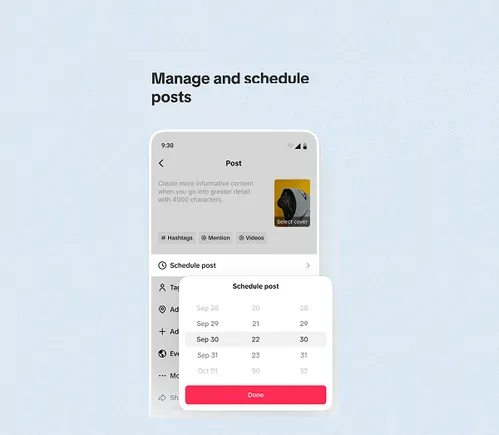The use of automation in many daily tasks has increased quickly, making life a little bit easier. Automation has become the new standard, whether it is through the use of chatbots or automatic reporting tools. It is intended to simplify workloads significantly and increase effectiveness. Some people, though, might not view it that way.
The mere thought of technology replacing your employment can lead to a great deal of worry, rage, and anxiety. It’s crucial to ensure that your staff members are gradually introduced to the new automated services.
People frequently only consider the worst-case possibilities when discussing automation in the workplace. The story that workers being shown the exit door when a machine takes over their employment is always supported by popular opinion. However, the logical conclusion is that workplace digitization, and automation will only increase employee productivity and diversity in the long run.
Importance Of Workplace Automation
The use of technology, hardware, and software in the workplace to perform repeatable or predictable tasks without human interaction is known as workplace automation.
Nowadays, software now drives the majority of workplace automation. APIs, big data, machine learning, and artificial intelligence (AI) have opened the way for new developments in analytics, pushing even more effective automation and the optimization of workflows, along with the shift toward cloud-based tools and apps.
Any API system is built around automation. Any small business or enterprise may easily automate various use cases and save countless hours while seamlessly linking tools by investing in technologies and platforms with APIs.
Automation in the workplace provides enormous advantages. It expedites tiresome tasks, enhancing the experiences of applicants and workers. Businesses that don’t automate processes risk losing the best candidates and top workers to rival companies that focus more on the future and better understand the workforce requirements in the twenty-first century.
Some of the significant benefits of workplace automation are as follows:
- Improved productivity
- More effective employee Onboarding
- Greater employee retention
- Better working environment
- Stronger employee brand and
- Faster growth
Tips for Helping Your Workforce Adapt to Automation
Automation will be the primary work driver across all sectors in the next decade. To make the most of current technology, your company must understand how to prepare its human resources best.
The following are a few practical tips that help in preparing your workforce for the automation age:
Leading by example is essential, mainly when introducing new automated processes to the workplace. Learn the latest technology so you can explain it to your staff. It would help if you comprehended it. They will probably accept the adjustment if they see you receiving it.
Tell your employees about your experience with the new technology and reassure them there is nothing to be concerned about.
Establish an open-door policy so that you may respond to any inquiries from your staff. Leading your employees towards change is an excellent strategy to establish trust and direction with the incoming technology.
- Identify Areas That Are Automation-Ready
Organizations must begin identifying positions that may be eliminated or modified since some tasks are more susceptible to automation than others.
AI will make it possible to automate practically all repetitive operations. It makes no difference whether the task is manual or mental, nor how much technical knowledge or ability is required to complete it. The task can be reduced to an algorithm and automated if it is predictable and repeatable.
- Be Transparent And Provide Required Training
Your staff may feel intimidated by the usage of automation in the workplace. According to studies, automation can cause workers to become ill because of extreme anxiety. Make sure to provide your staff with the appropriate instruction, acquaint them with the new technology, and promote humor about it.
It’s always a good idea to try out new technology before introducing it to others, especially your staff. Consider setting aside a certain amount of time each workweek to offer personnel the necessary training.
Your staff will feel more at ease if they understand how the automated technology works and is applied to do this. You’ll want people to think favorably of the new automation generally.
Make careful to emphasize the benefits of incorporating automation into the workplace to dispel any negative or unease-provoking thoughts from your employees.
While you might notice all the benefits, your employees might not. They can witness a machine taking over their job or be instructed on how to perform it. Discuss the advantages of incorporating automation into their working lives to help them feel more at ease.
Talk about how it may boost overall productivity, eliminate menial activities, boost sales, reduce workloads, and offer your employees more time to concentrate on other tasks. When your staff knows how it can help them and you, not just you, listing all the advantages will result in more favorable feelings.
Emphasizing areas or processes that can be repetitive or prone to error is the most excellent method to introduce automation into the workplace. Although automated technology can improve many operations, it’s crucial to understand that you should start in one area before taxing your employees.
Be aware of the effects of automation on your company and the range of tasks it can perform.
You don’t want to replace an employee’s job or task because you can do so. Select the best procedure to improve the efficiency of your workplace’s workflow and ensure that it will be long-term and cost-effective. Consider the benefits and drawbacks of what it can achieve, how it may be improved, and whether it is worthwhile to deploy.
Conclusion
Within the next few years, technology is expected to drive the majority future of work of many significant organizations. Therefore, businesses must exercise caution while preparing their employees for a technological change in the workplace.
As discussed in this blog, automation provides employees in any firm with several benefits and opportunities. Additionally, it’s crucial to remember that all firms still place a high value on people. For the time being, technology will only replace routine work. Therefore, businesses must use their human resources to complement automated equipment in the future.







































































